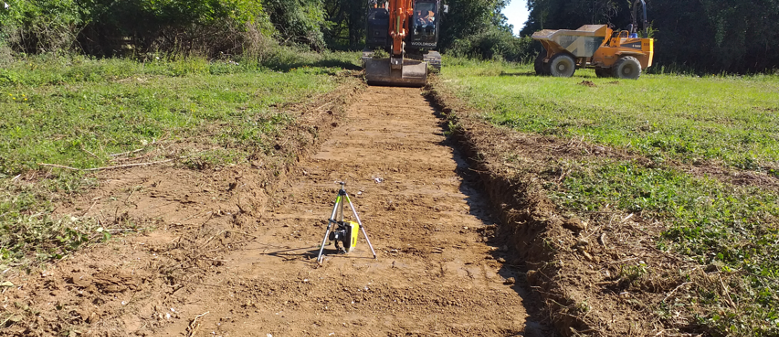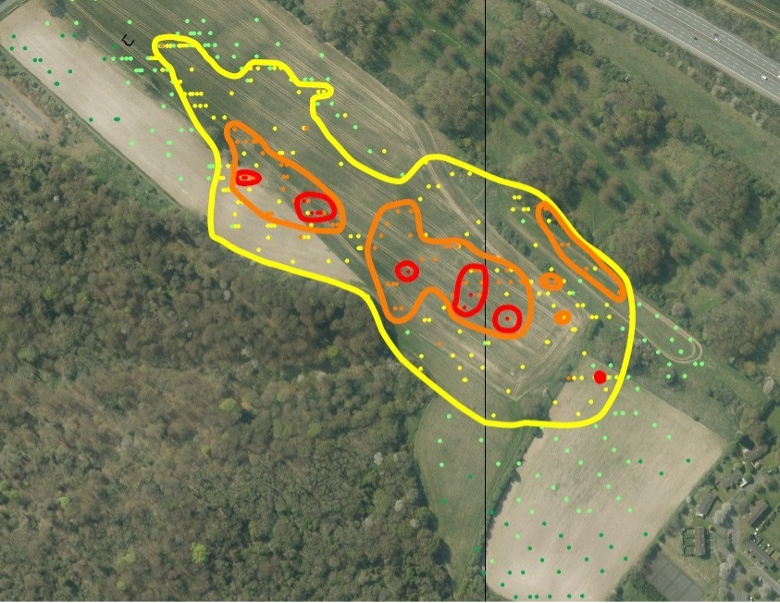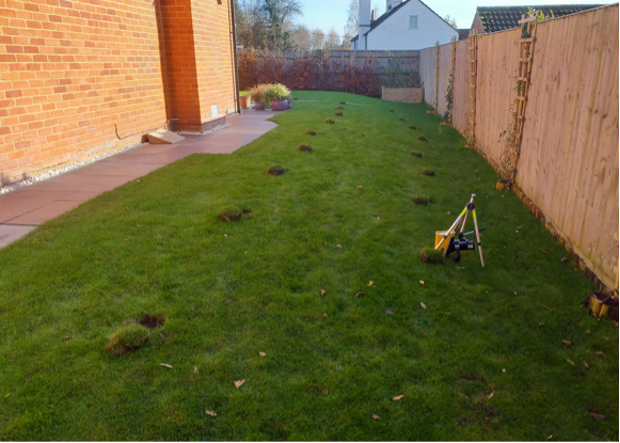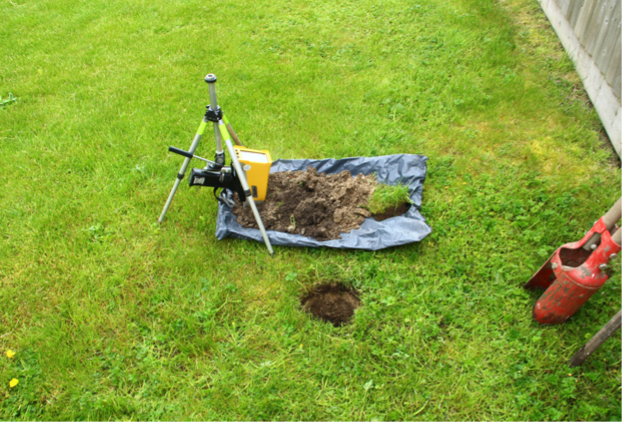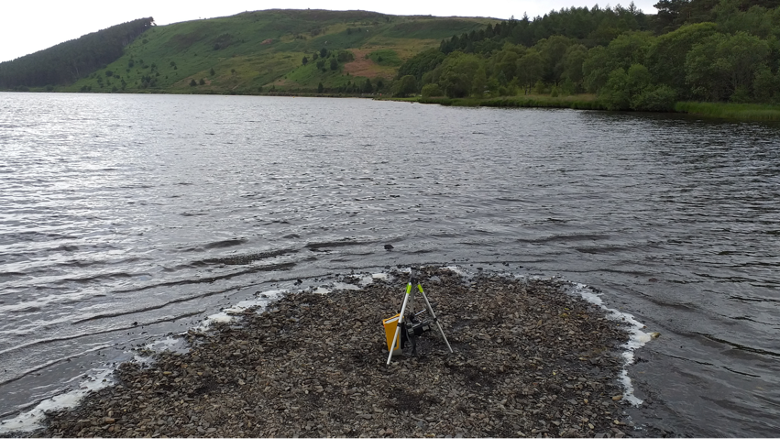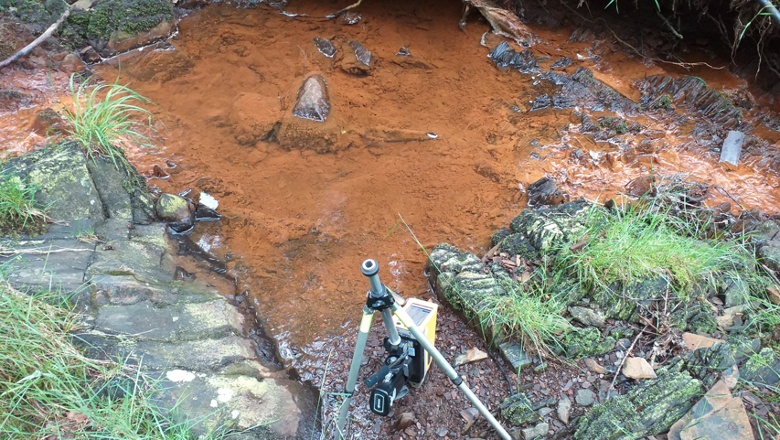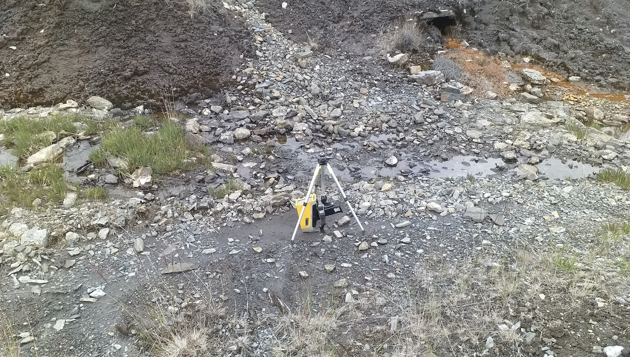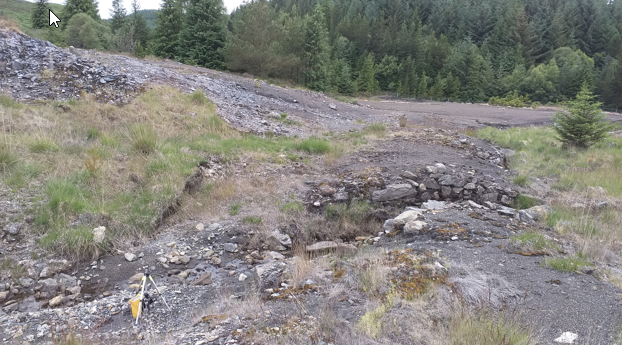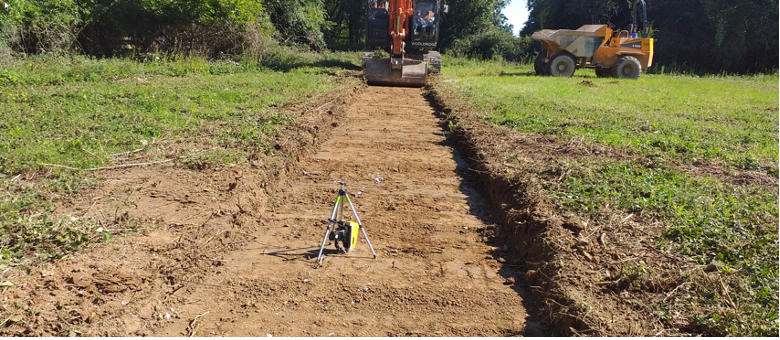Portable X-ray fluorescence (XRF) is a proven tool for the assessment of heavy metals contamination in soil. This is evidenced in our previous interview with Julian Puzyna of Sackedgate Ltd on the potential of using the Vanta™ handheld XRF analyzer to assess contaminated land.
We followed up with Julian to learn more about his experience using the Vanta analyzer for soil and environmental analysis in the United Kingdom.
Q: How did you begin using portable XRF to measure heavy metal contamination in soil?
Julian: I’ve been doing contaminated land investigation for years. Typically, we do all our work on a site. We’re seeking to answer the following questions: What is the history of the land? What human activities occurred there? What pollution happened there?
This investigation requires taking samples and sending them to the laboratory for analysis. In situ opportunities include performing bioassay tests for hydrocarbons. We previously used a small chemistry lab in the back of a van, which was difficult.
I started carrying out land investigations in 1997. Almost immediately contaminated land started to come together for geotechnics, so we began testing for contaminants.
We turned to the Vanta XRF analyzer when we were evaluating heavy metal contamination, which has no smell or discoloration. It’s challenging to evaluate heavy metal contamination since we can’t see it. Much of the toxic metal contamination in England is from lead (Pb). Lead contamination in soil can be caused by a range of sources. One example is clay target shooting that leaves lead in the ground. Urban soils can also become contaminated by lead from waste building products that were historically burned after construction. Another source is lead fallout from historical use of the petrol additive tetraethyl lead.
I was impressed with the Vanta handheld XRF analyzer and the concept of seeing the metal concentration on screen.
Q: What Vanta model do you use to analyze heavy metals contamination in soil?
Julian: We use a Vanta handheld XRF analyzer with the 2-beam GeoChem mode. Our test times are typically about one minute to one minute and 15 seconds when we’re looking for lead (Pb). For other metals, we do a longer test of 2–3 minutes. We don’t want to waste time overexposing samples.
We typically use the analyzer on a tripod. Often we need to dig and clear the land, set up the analyzer on the tripod, and start the test. It’s much easier to test with the tripod there.
Q: Do you perform any sample preparation to test the contaminated soil with XRF?
Julian: We use the Vanta XRF analyzer directly on the ground to test the soil. We also take that piece of soil and place it into a sample container to test using XRF. Sometimes we use a sieve to remove stones, after checking those stones with the XRF to make sure they aren’t actually the source of contamination. We send about 5 to 10% of our XRF-tested samples to the laboratory for validation.
On larger sites, we use the Vanta analyzer’s GPS. For smaller sites, we do some surveying on our own to set a grid and work from there. If the work does not require digging too many holes, then we’ll do 100 or 200 test exposures in one day.
Q: How many XRF tests do you perform on soil each day?
Julian: When we’re testing, we perform hundreds of XRF tests in a day. The Vanta handheld XRF analyzer works well and is rugged. I visit the job site and see what’s going on there based on the XRF results. Then we take lab samples here and there after identifying problems. The Vanta XRF analyzer has proved itself again and again.
In many situations, a lab test is used to provide a single value for lead or another metal. Often, we are seeking live information to help supervise remedial work, such as digging out lead contaminated soil. For instance, we may be tasked to help clean up an allotment site where the developer plans an area to grow vegetables and plants. As the excavator digs down, we stop and test using the XRF analyzer. We tell the excavator when to keep and stop digging. The Vanta XRF analyzer has saved our customers thousands of pounds in senseless soil disposal.
Q: How does XRF aid in the evaluation of land use?
Julian: Wherever there’s a change of land use, from commercial to residential, you must prove the land isn’t contaminated. This puts an onus on the housing developer to prove that the soil is clean rather than assuming it is clean.
The housing developer hires our team as a specialist to do the testing. We help the housing developers carry out the land assessment. Examples include the land of an old farm or workshop. The housing developers bring us in to do investigations where we use the Vanta XRF analyzer―it’s absolutely key to my investigation.
Q: What government regulations do you need to comply with during contaminated land investigations?
Julian: In the UK, the Department for Environment, Food, and Rural Affairs (DEFRA) has contaminated land guidelines and provides guidance on contaminated land.
For instance, there’s a lot of work being done on lead contamination in soil. Plants take up lead, then people eat the plants and can end up with lead poisoning.
We look at acceptable lead contamination in soil based on safe levels set by DEFRA and other environmental agencies.
Q: Where do you usually perform your XRF tests during contaminated land investigations?
Julian: Sometimes we perform XRF tests at drilling rigs on the site. The holes from the drilling rig are as deep as 30 meters or 98 feet. This work includes testing drill cores with XRF to see which natural metals are present.
Sometimes we explore the ground by digging trial pits with an excavator, then take the XRF analyzer into the excavation once the area is declared safe. Alternatively, we test samples taken from the trial pits to a location where we can safely set up an analysis station. Often, we’re the first on site to see the contaminated items and soil left behind by previous land use.
Brown iron stained soils or black manganese stained soils can be quickly assessed with the Vanta XRF analyzer, enabling the next stages of investigation to be planned there and then—not two weeks later when the lab results are received.
Q: What are some interesting things from history you’ve discovered during contaminated land investigations?
Julian: I always find horrible rubbish from the Victorians to recent forefathers. A colleague found a large metal item with a rounded end in a trial pit, so they had to call in the bomb squad. It turned out to be a steam engine that was still on its tracks, so they called the railway historians.
Once a colleague found a barrel of chloroform, which was quite scary. It sounded like diesel when he described the barrel. However, when I took a sniff of the sample, I passed out for a second and found myself on my knees with broken glass and soil on the floor around me from the busted sample jar that I dropped.
During World War II, many things were done in a rush and materials were not properly disposed. We’re always finding interesting things from history.
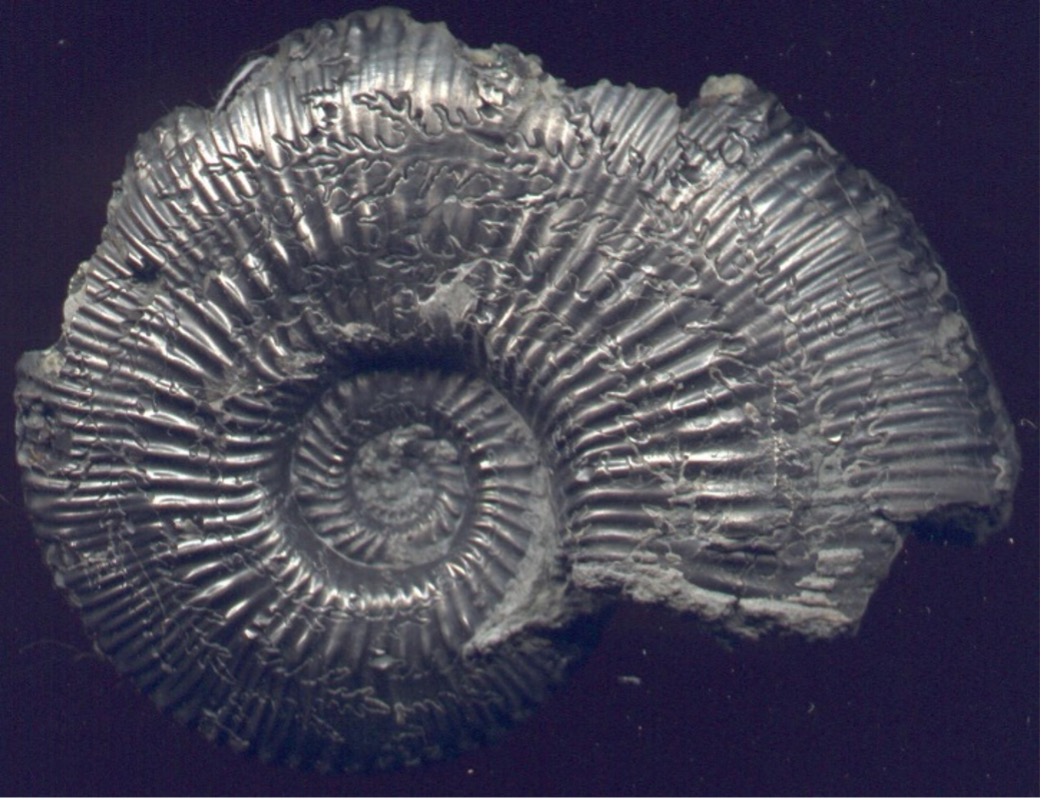
Pyritized ammonite from the Oxford Clay Formation in the UK.
Fossils are always an interesting find in deeper samples of natural clays and mudstones. I have a cabinet full of shiny fool’s gold shark teeth, ammonites, and plant branches. When I tested some of these items (see the ammonite above) with the Vanta XRF analyzer, I saw that there was a lot of sulfur and arsenic present. Probably arsenopyrite alongside the iron pyrites. Definitely fool’s gold.
About the IntervieweeJulian Puzyna has spent years completing more than 800 ground investigations in the UK as the lead or sole engineer. He is experienced in assessing maps, aerial pictures, and Phase 1 Desk Studies for geoenvironmental investigations to provide insight into the industries and practices that have historically contaminated the ground. These efforts enable focused preliminary risk assessments to be made with sensible recommendations for further work. Julian uses XRF analyzers with great success to investigate sites where odd or sporadic lead contamination has been found. Testing hundreds of locations over tight grids is not generally financially feasible with test pits and laboratory analysis. However, XRF testing has found hotpots and variations of metals on sites, as well as helped limit remedial work to solely contaminated soils. | 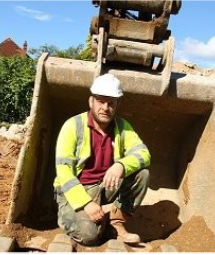 |
As a result, developers have made significant savings in exploration and earthwork costs on a growing number of projects.
Learn More about Analyzing Heavy Metals Contamination in Soil
To learn more about using portable XRF analyzers to assess heavy metals contamination in soil, be sure to read Julian’s first interview here! For any questions about XRF, simply contact an Evident representative for expert assistance.
Related Content
Detecting Lead in Soil—XRF Reveals Long-Lasting Soil Contamination from Paint and Gasoline
Handheld XRF Measures Radioactive Contamination at Chernobyl for Research and Cleanup
Using the Vanta Handheld XRF Analyzer to Assess Contaminated Land
